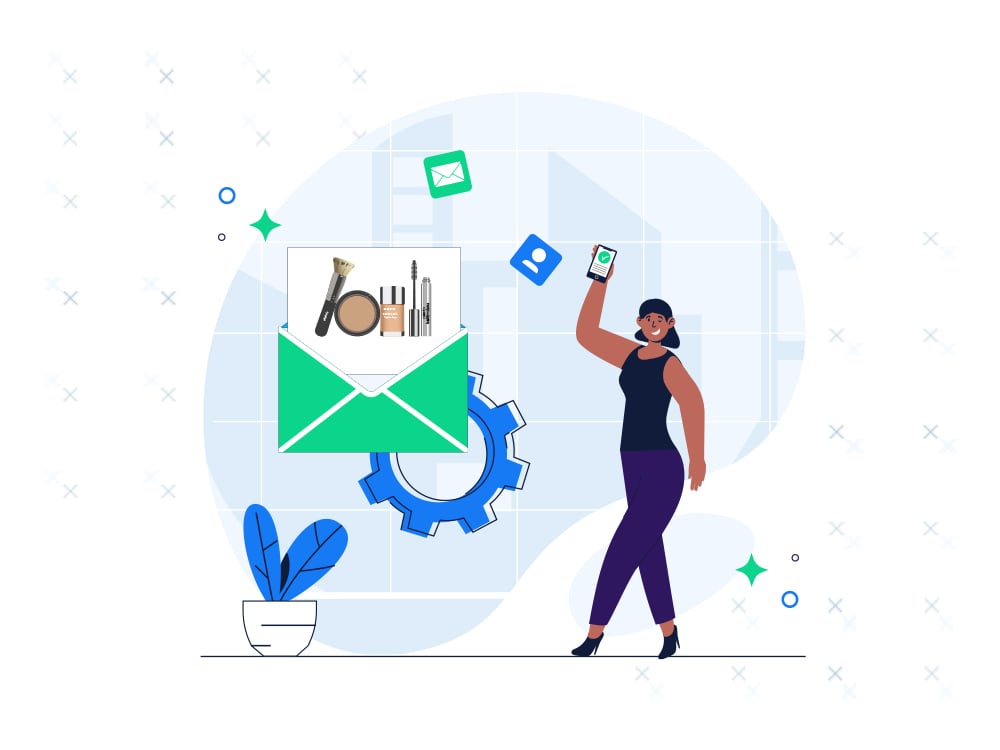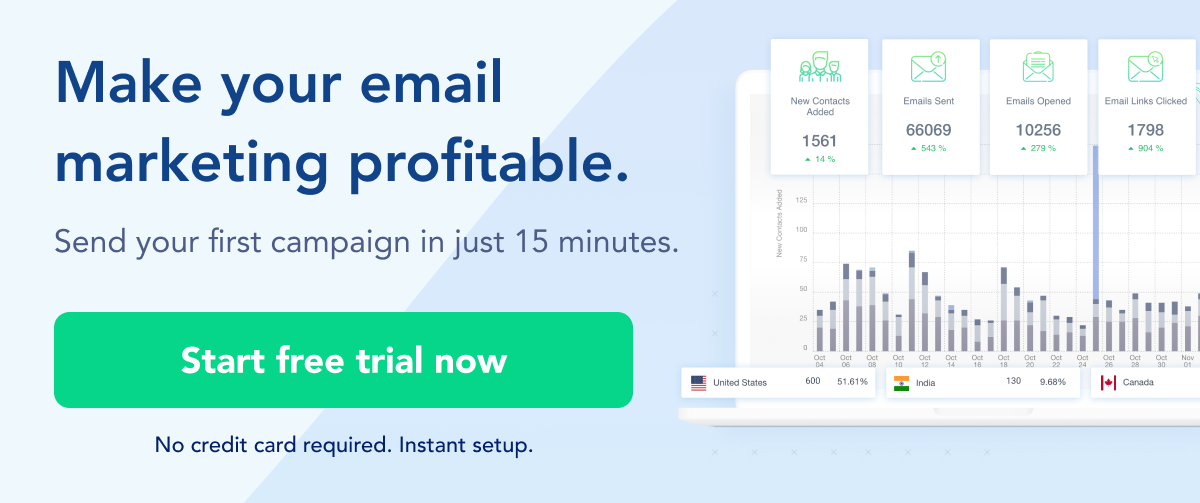
How Email Marketing Platforms Help Increase Shopify Sales
If you’re on Shopify, odds are you’ve got making money on the brain. The question is are you using your email marketing platform to increase Shopify sales? If not, you’re leaving money on the table as the saying goes.
Here’s the thing - growing an ecommerce business takes more than just setting up an online store. Driving sales for your Shopify store requires a strategic email marketing approach. And, you need to be using an email platform like SendX to boot.
Let’s get your email list converting into some cold hard cash, shall we? We’re breaking down our best tips, so let’s get into it!
Table of Contents
Collect Email Subscribers
The foundation of any email strategy is building a quality list of engaged subscribers. There are several smart ways Shopify merchants can grow their email list to drive more sales.
-- First, embed email signup forms across your store. Add forms to key pages like product pages, cart, and checkout to capture buyer information. Offer an instant discount or free shipping coupon to incentivize signups.
-- Next, motivate new subscriptions by offering exclusive offers. Think discounts, early access to sales, or free resources like eBooks or webinars only to your email list. Special perks entice visitors to join.
-- You can also import your existing customer contact lists into your email marketing platform if you have prior data. Upload the contacts and send a welcome series introducing them to your store offerings.
Pro Tip: Don’t send emails without an email marketing platform
You might be wondering why we keep mentioning an email platform rather than just suggesting sending a bulk email from your current email service provider.
The truth is, if you send emails without using a proper platform, you’re just asking to get your emails sent to spam folders at best, and blacklisted entirely at worst!
If you want to send bulk emails that actually land in your audience’s inbox, using a platform like SendX will help you do it because it will add the proper protocols to your correspondence that tell Gmail, Yahoo, iMail, etc… that your email can be trusted.
Once you’ve got your email marketing platform sorted out, here are a few additional ways you can collect more email subscribers:
-- Influencers in your niche are a great avenue for expanding reach. Partner with relevant bloggers or social media personalities to promote your brand to their email lists in exchange for discounts or affiliate commissions. Their established audience can rapidly grow your own list.
-- Paid advertising is another subscriber driver. Create Facebook and Instagram ads showcasing an appealing lead magnet or discount and drive traffic to your email signup landing page. Paying to acquire emails of interested prospects can give your list a healthy boost.
-- Start a YouTube channel that showcases your products. Not only can you create amazing unboxing videos, you can talk about the products and their features. End every video with a CTA to join your email list for special offers that people can’t get anywhere else. And, while you’re at it, add your newsletter signup link to all of your video descriptions and your channel’s “about” section.
Whatever method you choose though, just make sure none of them involve buying an email list. It’s never a good idea to buy an email list because it’s yet another way to get a black mark on your email address. Read our post Why is it a Bad Idea to Buy an Email List? to learn more reasons to stick to acquiring emails legitimately.
The larger and more engaged your email list, the greater your Shopify sales potential. Focus on growing your list by placing signup forms across your store, offering irresistible incentives to join, partnering with influencers, importing existing contacts, and running paid ads. A subscriber list full of eager customers is an ecommerce merchant’s most valuable asset.
Promote New Products
Okay so now you have a healthy list of email subscribers. How can you use that list to increase Shopify sales? It all starts with promotional emails.
Email marketing is a powerful tool for Shopify merchants to drive sales of new product launches. Strategically promoting your latest items to engaged subscribers can generate major revenue.
One of the most effective approaches is featuring new arrivals prominently in your regular email newsletters. Dedicate a section in each newsletter to showcase your newest products with appealing descriptions, pricing, and high-quality images. Links take readers straight to the product page to purchase.
You could embed images that showcase your best products, or you could create YouTube videos showing off the products that you’re selling.
Giving your email list early access to upcoming releases also works. Send a “sneak peek” email allowing subscribers to browse and pre-order new inventory before it goes live on your store’s website. Early access makes customers feel special.
You can also use email to alert subscribers about sales or limited-time promotions for new products. Send a dedicated email showcasing the deal and urgency to buy before it expires. Time-sensitive offers will spark action.
Strategically place links and banners promoting new items in any email that goes out. For example, a confirmation email after purchase can feature a banner for “Just Released” inventory at the top. This catches attention regardless of the main email purpose.
Personalizing product recommendations to each customer also boosts new item discovery. Email tools let you suggest specific new products based on purchase history and browsing behavior, increasing conversion likelihood.
The options are endless when using email to drive new product sales. Schedule releases for your newest items to be featured in upcoming newsletters. Give your VIP subscribers special early access to generate buzz. Run limited-time new product promotions exclusively for your list. Include links and banners across all emails. Personalize suggestions.
With a strategy in place to promote new product launches via email, Shopify merchants see higher adoption of newly added inventory. Email turns product debuts into sales-driving events. Devise targeted campaigns as new items are released to maximize revenue. Your subscribers crave fresh, exclusive content, so satisfy them with innovative email marketing.
Retain Existing Shoppers
Email marketing is invaluable for retaining existing Shopify customers and nurturing repeat purchases. Loyal shoppers are a store’s most valuable asset.
Implementing post-purchase follow-up email sequences keeps your brand top of mind. Send a personalized thank you email after a customer buys, followed by a review request, content recommendations, or an incentive to return.
For lapsed customers who haven’t purchased in a while, targeted win-back emails re-engage them. Segment these buyers and send special offers or new arrivals to entice return visits.
You can also remarket to previous customers through email and Facebook ad retargeting. Dynamically display products they’ve bought or browsed as on-site ads or in dedicated emails recommending similar items.
Offering loyalty perks and unlocks exclusively for repeat buyers incentivizes further purchases. After a set spend threshold is met, customers unlock free gifts, discounts, or VIP access. Make your best customers feel valued.
Dedicate time to optimizing the post-purchase experience through email. Follow up quickly after each sale. Re-engage at strategic times. Retarget to reignite interest. Reward loyalty. Seek out feedback.
Crafting retention-focused email campaigns tailored to existing customers boosts long-term Shopify revenue. We’ve explored proven techniques for nurturing repeat purchases through follow ups, win-backs, retargeting, perks, and surveys. Valuing current customers fosters a sustainable Shopify business.
Advanced Email Marketing Strategies to Boost Shopify Sales
To close things out, let’s finish with some more advanced strategies to increase Shopify sales. These include, but aren’t limited to:
- Abandoned Cart Emails: Set up automated email sequences to target customers who added items to their cart but didn't complete the purchase. These emails can remind them about the items left in their cart, offer a limited-time discount or free shipping to incentivize the purchase, and provide a direct link to complete the checkout process.
- Cross-Selling and Upselling Emails: Analyze customer purchase data to recommend complementary products or upgraded versions of what they've previously bought. Personalized product recommendations can increase the average order value and drive additional sales.
- User-Generated Content Emails: Showcase customer reviews, testimonials, or user-generated content (e.g., photos, videos) featuring your products.
- Seasonal and Holiday Campaigns: Create email campaigns around seasonal events, holidays, or special occasions. Offer limited-time discounts, gift guides, or exclusive bundles to capitalize on these peak shopping periods.
- Subscription and Replenishment Reminders: If you’re selling consumable or replenishable products, set up automated emails to remind customers when it's time to reorder or refill.
- Referral and Affiliate Programs: Incentivize your existing customers to refer friends and family by offering rewards or discounts for successful referrals. You can also collaborate with influencers or affiliates in your niche and promote their affiliate links through dedicated email campaigns.
- Welcome and Onboarding Sequences: Create a series of welcome emails for new subscribers or customers.
Remember, the key is to segment your email list based on customer behavior, preferences, and purchase history, and craft personalized campaigns that resonate with each group. Continuously test and optimize your email strategies to improve open rates, click-through rates, and, ultimately, Shopify sales.
Email marketing is a multifaceted tool that is underutilized when it comes to making money online. If you want to increase new product sales use Shopify, it’s high time you start using it to grow your revenue while also building a community around your shop. Happy selling!




